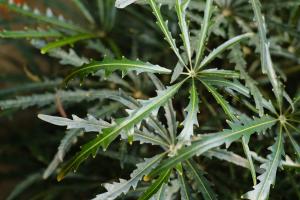Introduction
Tomatoes are one of the most popular vegetables grown in home gardens, but they are susceptible to a variety of fungal diseases that can devastate their growth and yield. Understanding the causes of tomato plant fungus can help gardeners take measures to prevent them and protect their crops.
Biotic Causes of Tomato Plant Fungus
One of the major biotic causes of tomato plant fungus is fungi themselves. Fungi are organisms that thrive in warm and moist conditions and can infect tomato plants through wounds on their leaves, stems, or fruit. Common fungi that cause tomato plant fungus include alternaria, fusarium, and verticillium.
In addition to fungi, bacteria and viruses can also cause tomato plant fungus. Bacterial wilt is a common disease that affects tomato plants and is caused by a bacterium called Ralstonia solanacearum. Viruses such as tomato spotted wilt virus and tomato yellow leaf curl virus can also lead to fungal infections in tomato plants.
Abiotic Causes of Tomato Plant Fungus
Abiotic factors can also contribute to the development of tomato plant fungus. One of the most common factors is moisture. If the leaves and soil around the plant remain wet for extended periods, it creates a favorable environment for fungal growth.
Another abiotic factor that can cause tomato plant fungus is temperature. Extreme temperatures, whether hot or cold, can stress the plant and make it more susceptible to disease. A lack of proper nutrition or soil pH level can also negatively impact the plant.
Prevention and Treatment
The key to preventing tomato plant fungus is to create an environment that is unfavorable for fungal growth. Gardeners should aim to keep their plants dry, with good airflow, and adequate spacing between plants to prevent the spread of infection. This can be achieved through practices such as crop rotation, using clean soil, and pruning infected parts of the plant.
If a fungal infection does occur, it is important to take swift action to prevent it from spreading to neighboring plants. There are a variety of natural and chemical treatments available, including fungicides, copper sprays, and neem oil treatments.
Conclusion
Tomato plant fungus is a common problem that can cause significant damage to crops if left untreated. By understanding the biotic and abiotic causes of fungal infections and taking preventative measures, gardeners can help to keep their tomato plants healthy and free from disease.

 how many times do yo...
how many times do yo... how many planted tre...
how many planted tre... how many pine trees ...
how many pine trees ... how many pecan trees...
how many pecan trees... how many plants comp...
how many plants comp... how many plants can ...
how many plants can ... how many plants and ...
how many plants and ... how many pepper plan...
how many pepper plan...































